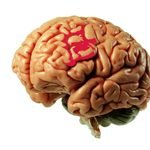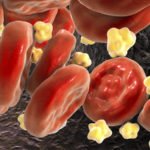Here’s a new twist on the old Drunken Shrimp recipe. According to a new study just published in the journal Aquatic Toxology,a lot of shrimp may be getting stoned on Prozac. That’s because they swim in waters polluted by pharmaceutical drugs, including antidepressants, which get flushed into the world’s waterways after they go through our bodies. The study, undertaken by researchers at U.K.’s University of Portsmouth, demonstrates that antidepressants now present in seawater may be altering the behavior of shrimp in ways that make them more vulnerable to predators.
As reported in the National Geographic News, scientists exposed shrimp to fluoxetine, which is the generic name for the active ingredient in Prozac and Sarafem. The exposure mimicked the average levels of fluoxetine found in water coming from sewage-treatment plants. And the shrimp, which normally hide in dark, safe corners, merrily headed for bright spots like drunken sailors drawn by neon lights. These shrimp were not happy drunks either, at least not according to the rather sensationalistic journalists who reported that the Prozac-intoxicated shrimp were committing “suicide.” What they meant, according to study co-author Alex Ford, is that, “This behavior makes them much more likely to be eaten by a predator, such as a fish or bird.”
What happens is that fluoxetine makes the animal’s brain more sensitive to seratonin. This alters mood and sleep patterns, which in turn affects the animal’s behavior. The researchers noted that with the rising use of antidepressants — 2005 usage levels were recently calculated at 10 percent of the U.S. population, or 27 million people, and climbing — it is very likely that the drugs are affecting other animals as well.
But antidepressants are just the tip of the pharmaceutical iceberg. Sea animals are regularly exposed to a range of drugs including antidepressants, painkillers, and anti-inflammatory drugs. Dr. Ford points out that the impact of these substances can be reduced through more public education about responsible disposal of prescriptions and the installation of improved technology at sewage treatment plants for breaking down excreted and flushed pharmaceuticals.
And again, if only the problem stopped with pharmaceutical pollution in the waterways, it wouldn’t seem so overwhelming. But the waters teem with plenty of other toxins that affect sea life. For instance, some years back, government researchers studying the Potomac River discovered “smallmouth bass with intersex, a condition where male fish develop premature egg cells.” Interestingly, while large numbers of male fish with intersex were turned up in the study, no cases of female fish with imposex — a corresponding condition in which female fish have malformed ovaries or produce sperm — were found. By studying the composition of the water, the researchers were able to determine that the fish were affected by chemicals that are known to trigger sex changes in animals. Specifically, they found “chemicals from pesticides and flame retardants as well as fragrances commonly found in products such as soaps, antiperspirants, and deodorants.” All of the fish studied had at least one of these pollutants in their systems. If these chemicals trigger sex changes in animals en masse, we can only shudder to think what direct contact with these things does to us. Early puberty for girls and smaller penises for boys may be just a hint of things to come.
Of course, it’s not exactly hot off the presses that chemical residues are having a profound impact on aquatic life. A 2008 study by Environment Canada determined that about 400 of the 30,000 or so chemicals used commercially in the U.S. and Canada don’t break down in the environment. One result is that increasing amounts of these substances can accumulate in fish and wildlife. As you might suspect, fewer than 25 percent of these chemicals are regularly analyzed. Over 75 percent have not been studied at all.
Then there is the earlier work by John Incardona and Nathaniel Scholz at National Oceanic and Atmospheric Administration’s Northwest Fisheries Science Center and the West Coast Center for Oceans and Human Health on the impact of the Exxon Valdez spill in the Pacific. They found that the polycyclic aromatic hydrocarbons (PAHs) left floating through the waters caused heart defects in herring and pink salmon embryos. And let’s not forget that PAHs flow into coastal waters not only from oils spills, but from urban runoff and other sources.
Dr. Incardona has studied the impact of PAHs over the last six years. PAHs come from burning fossil fuels and carbon-based fuels from wood, incense, cigarettes, and so on. Dr. Incardona says they slow the heartbeat in fish embryos to such an extent that they lead to heart deformities and fluid buildup around the heart. In zebrafish, whose systems are remarkably like humans, the absorption of PAHs through the skin leads to severe heart deformities.
If it’s not good for the shrimp, herring, salmon, and zebrafish, the odds are it’s not good for us. Incardona says that when it comes to PAHs, in urban environments, “we are breathing an aerosolized oil spill.” PAH’s should be considered “prime suspects for cardiovascular impacts related to air pollution.”
You can’t run and you can’t hide. Both the water and the air are being made into toxic stews that can have disastrous impacts on life on the planet. The ultimate solution is to reduce reliance on toxic chemicals and to increase the filtering and removal of these chemicals from wastewater BEFORE it is discharged into the environment. Right!! In these days of budget deficits and economic woes, that may be unrealistic. On the other hand, if the environment is made continually inhospitable for human, animal and plant life, the economic issues will eventually cease to matter. But by now, you know what to do to protect yourself to the extent possible — clean up your drinking water, grow your own food and sprouts when possible, choose food sources wisely when growing your own is not an option, and detox every three months.
Oh, and grab onto something quickly if you ever find yourself slowly drifting towards a bright light.
:hc











